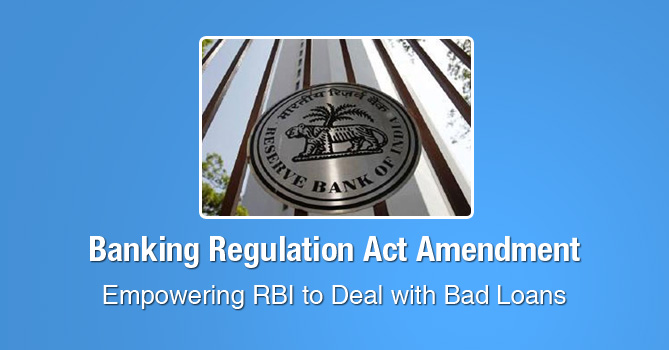Bank loan defaulters will now find it more difficult to get away as the RBI gets more teeth to deal with the problem.
The Cabinet has just cleared a proposal to amend Section 35A of the Banking Regulation Act through an ordinance and sent the same to the President for his assent.
The overall non-performing assets (NPAs) of the banks has crossed Rs 6.07 lakh crore as on 31st December 2016, of which the public sector bank’s exposure is Rs 5.02 lakh crore. This can be compared with the NPAs standing at Rs 2.67 lakh crore on 31st March 2015. It’s this significant rise that has had the government finally wake up and take action.
Consequent to the high profile Kingfisher Airlines default case and increased scrutiny of all bad loan decision taken by banks, bankers have been very careful in extending further loans for big ticket projects. In addition, they have been reluctant to lower interest rates, despite encouragement from the Reserve Bank of India (RBI).
The unresolved NPA issue, along with poor credit offtake, has led to poor private sector investment in infrastructure projects, thus slowing down the economy.
The current move by the Narendra Modi-led government giving RBI greater powers to advise and work with lending banks to resolve default issues is expected to energize the entire banking sector.
In addition, the ordinance proposes changes to the Prevention of Corruption Act (PCA) to protect bankers from prosecution and harassment at a later date on account of loan related decisions. With both the above initiatives, RBI is expected to expedite resolving the current NPA problem and ensure tighter NPA monitoring from an early stage, in future.
Under the proposed framework, RBI will work along with multiple oversight committees on addressing the non-performing assets. Since 60% of all bad assets can be attributed to top 40 NPAs, the RBI plans to focus on these on priority and get the oversight committees to work with the concerned banks in resolving these.
Another problem has been lending banker’s consortium not agreeing on the way forward for resolving the NPA problem. Under the new proposal, the Joint Lenders Forum (JLF), a consortium of concerned lending bankers, will now address each project individually and ensure all lending bankers agree with the lead banker having maximum exposure in a particular project, on the share of write-off for each involved bank. In cases of a deadlock in negotiations within the JLF, RBI will step in to resolve issues.
The government has been facing criticism for not taking harsh action in controlling the rise of NPAs. With the Prime Minister keen to push for higher investments in infrastructure related projects, the NPA issue has been a drag.
With an eye on the 2019 General elections, this ordinance, once approved, will ensure lowering of interest rates and easier flow of credit into the economy. Future defaulters – BEWARE!






